
Rhostyllen
A history through pictures

Bersham School -
Timeline:
1868 – Bersham National School built to attempt to give an education to the poorest children
1870 – Formation of local elected School Boards – Bersham Board School set up
1876 – Principle established that all children should have a free elementary education
1876 – Bersham School extended to house Infants, Junior Boys, Junior Girls sections
1880 – School leaving age 10
1893 – School leaving age 11
1899 – School leaving age 12
1900 – Infants left Bersham for the newly opened school in Rhostyllen
1904 – Junior Girls left Bersham for second new school in Rhostyllen next to Infants School
1904 – School Boards taken over by Local Education Committee of Rural District Council
1918 – School leaving age 14
1935 – Bersham School renovated ready for reorganisation
1936 – Rhostyllen Junior Girls enlarged ready for reorganisation into Senior School
1937 – Opening of Rhostyllen Senior School. Junior Girls moved back to Bersham
1937 – Establishment of Bersham Junior Mixed School
1944 – Senior School in Rhostyllen became a Secondary Modern School with leaving age raised to 15
1960 – Opening of Bryn Offa School. Rhostyllen Secondary Modern School renovated as Junior School
1961 – Bersham closed and all Junior pupils moved to Rhostyllen. Infants remained at original school next door
1969 – School leaving age 16
1992 – Combined Infants/Junior School remodelled on site of Junior School. Infants building to be demolished
The building of the main school and redevelopment of the ‘Top School’
The National School premises at Bersham (‘Top School’) were handed over to the new Bersham School Board in 1871, provided that the bible would be in daily use and that rooms would be available for Sunday School. By February 1872, the Board had submitted rough plans for a new school for boys and girls adjacent to the present building on land owned by Thomas Fitzhugh. At the same time, the Top School would be redeveloped as the Infants department.
In April 1874, two tenders were put out:
- Erection of a Boys and Girls School to accommodate 190 at Bersham Village with an architect’s estimate of £1331
- Alteration of the late National School at Bersham Village for 135 Infants with an architect’s estimate of £747
Six builders submitted estimates for the main school, the highest of which was £1537. The Board accepted the estimate of £1385 from Edward Williams. Richard Bunn won the contract for the Infants @ £722.10.0. Estimated total costs for all aspects of the completed schools were £1896 and £803 respectively. The money would be borrowed from the Public Works Loan Commission on security of mortgage of school fund and the Local Rates of the District, payable in 50 fixed annual sums.
By November, Edward Williams’s contract was cancelled, as he had failed to make progress on the building. Mr Bunn offered to step in at his original price of £1437 but he then withdrew from this second contract. New tenders were invited and the contract was eventually awarded to Phennah and Davies at the much higher cost of £2125 on condition that the building was completed by October 1875. This firm also took on the contract for repairing the School House for £45.10.0. The order for all school furniture was given to Mr S Lamont of Chester.
By June 1875, Mr Bunn gave notice that the Infants School was ready for occupation. Initially, this section would have to house all the children until the new Junior Boys and Girls School was ready in January 1876. External hiring of the building could now take place: the vicar of Wrexham enquired when the Infants would be ready for Sunday services; Mr Greville of Laurel Grove wanted to hire the rooms for an unspecified purpose connected with the Turkey Mill; Mr Blew asked for use of the premises on behalf of the Presbyterian Chapel which was being painted; Mr W Edwards, the local blacksmith, asked to hire a room one night per week for the Good Templars Lodge (this was eventually granted after lengthy discussions on the legality).
Advertisements for the three Head Teachers were placed in several newspapers: Mr George Bristow, assistant master at Penygelli, was appointed as Headmaster of the Boys (£70 per year, including a rent-
School Log Books
The school log books for the Bersham Board School, filled in daily by the Head Teacher, are available to view at the Denbighshire Record Office situated in the old jail at Ruthin. To protect the privacy of past pupils still alive, there is a 75 year data protection block on the content and the last available pages to view are up to 1938. The school had three sections, all housed initially at Bersham.
The first entries are:
- Infants’ School – January 14th 1876. The very first entry was: “I, Mary Rogers, late assistant mistress at Penygelli Board School, commenced duties as Infant Mistress at Bersham Village School. I find the children rather backward”. This department was based at Bersham until Rhostyllen Infants School was ready for use in February 1900 {See under Rhostyllen School – History}
- Girls’ School – January 14th 1876. Miss Mary Anne Griffiths, the Head Mistress, noted that on the opening day 78 girls transferred from the former ‘Mixed’ department; by the second week, the average attendance was 44. She complained that order in the classrooms was not as good as desired. There appeared to be a lack of desks, easels and blackboards, necessitating the use of those belonging to the boys’ department. In June 1904, the Girls Department moved to Rhostyllen on the site next to the Infants, with provision now for laundry and cookery classes. That site became the Senior School in 1937 and the girls moved back to Bersham.
- Boys’ School – October 15th 1891. The Head Master, Mr George Bristow, wrote on the first page: “This day for the 17th time have I had the honour, as Head Master, of welcoming Her Majesty’s Inspector and his assistant to Bersham School”. Unfortunately, there is no earlier log for the Boys’ School and therefore no records from 1868 to 1891. Bersham was a boys-
only school from 1904 to 1937, when it became Bersham Junior Mixed School under the Headship of Miss C Mitchell.
There are three separate log books for the three departments each with its own Head Teacher. After the Infants moved to Rhostyllen in 1900, the Boys’ and Girls’ departments remained under separate Head Teachers at Bersham. In 1904, the girls moved to a new building in Rhostyllen next to the Infants School and now had access to domestic science facilities. The following selection of snippets from the logs are taken randomly from the Boys’ and Girls’ sections.
An interesting feature of teacher training at this time was the appointment of older pupils, often from other schools, to be given the opportunity of testing their suitability. The log for 28 January noted that Lucy Hughes of Adwy aged 13 was received as a ‘monitress’, with a view to becoming a pupil teacher. Later the Head Teacher wrote: “Lucy Hughes is an active girl and will, I think, make a good teacher in time. She has authority over her class and is industrious”. Mr Bristow wrote in 1892 that Louis Blew was qualified under Article 50 and that the three teachers were himself, Louis and James Baker, another pupil teacher who was sent home in disgrace on 26 August for deliberate disobedience in the matter of corporal punishment. The future MP for Wrexham from 1955 to 1970, Mr James Idwal Jones, became an Uncertified Teacher at Bersham in 1918.
On Friday 10 February 1882, the school had a visit from Mrs Greville of Laurel Grove, who promised to send up some material for the girls to sew. {The Grevilles owned the grand-
The new Head teacher after Miss Griffiths was Miss H A Davies but by March 1887 she too had retired. The new appointee Miss E A Plant expressed her anxiety about the school standards following a poor report by inspectors. She noted in the log on 5 December 1889 that Ada Blew, a pupil teacher, should be informed that she was now qualified. Her sister, Lillie Maud Blew, was to become a candidate for ‘teachership’. Further information on this family will emerge on the boys’ school log.
The fourth Head teacher since the Girls’ School opened, Miss E M J Morgan, started work in 1894 and was in charge when the children moved to Rhostyllen. Later there was a Mrs Bishop, followed in 1921 by Miss M A Griffiths. On 31st August 1926 Miss C Mitchell entered upon her duties as Head teacher; she remained in post until the late 50s and is still fondly remembered by past pupils.
On 2 January 1896 when the school re-
Some old-
19 May 1898 provides an historical perspective: “The Grand Old Man is gone. The boys decided by a show of hands to abstain from play until after the funeral”. {William Ewart Gladstone, former Prime Minister and Chancellor of the Exchequer, died at the age of 88 at Hawarden Castle, his estate in Flintshire which previously belonged to the family of his wife. In 1885 he bequeathed a fortune and his books to St. Deiniol’s Library, Hawarden. It is now known as Gladstone’s Library and has a statue of him in the front grounds}.
Death of Head Teacher, George Bristow: For the next few months after January 1900 Mr Bristow made frequent reference to his poor state of health. By 7 May the log noted: “For some weeks past the Headmaster has been suffering from throat trouble, perhaps not caused by, but most certainly aggravated by schoolwork. His medical adviser recommends a week’s entire rest”. He was reluctant to do this, as he felt unable to hand the school to somebody else. On the evening of 25 May the Headmaster ‘passed to his rest’ after a short but painful illness – double pneumonia.
The new Headmaster, who started work on 27 August 1900, was Louis Blew who had been a pupil-
The Chairman of the Board gave the boys a holiday on 3 April 1901, as it was the Headmaster’s wedding day. On 2 June 1902 the entry began with a heading: “Hurray Peace. During the evening hooters were plainly heard and as one after another were sounded, only one opinion could be formed and that was peace. With glad hearts we assembled in the morning expecting to have other news but none arrived until 1.30 pm. The Vice-
For the next two years Mr Blew’s entries in the log book were tinged with references to his poor health: “my cold still being troublesome”, “I decide to stay in bed”, “I have not yet succeeded in getting rid of my cough, which is very troublesome”, “I have not been feeling well for some time”, “my cough is troublesome and attacks me whenever I speak”, “according to the doctor’s orders, Mr Blew is not to attend school”. On 18 December 1903 the deputy Headmaster wrote: “After having been confined to his bed for several weeks, Mr. Blew breathed his last peacefully and quite happy died about 10 pm on December 16th “. A condolence card was attached to the same page of the log book. He was 31 years of age. The teachers and boys from the school attended his funeral.
On 25 January 1904 Mr Edward Gordon Griffiths took charge of the school. One of his log entries on 26 July 1906 concerned the ex-
{The life of ‘Fred’ Blew – actually Francis Thomas Fincher Blew-
Note: ‘Turkey Mill’ – Bersham wasn’t the only place in Britain to use this name for its paper mill but the origin of the word is not clear. It has been suggested that it refers to Turkey Red dye used on the cloth/rags in the paper making process.
In January 1937 the Boys’ School log book was transferred to Rhostyllen Senior School and was filled in by the new headmaster, Mr R W Pugh. The Headmistress of the Girls’ School, Miss C Mitchell, moved to Bersham and continued the Girls’ School log book as Bersham Junior Mixed School. Her colleagues in the 1950s were Mr Cyril Hughes, Mr Clifford Giller and Mr Edward King.
School numbers: in January 1900 Mr Bristow had written that the school opened with 126 boys present out of 140. In September 1912 the Chairman of Managers signed off the attendance register with 199 boys present out of 205, the highest number present in the history of the school. In 1937 26 children were transferred to the newly opened Rhostyllen Senior School and 41 children transferred from Rhostyllen Infants to Bersham. On April 21st 1937 the school was closed throughout the day for the purpose of celebrating the official opening of the Rhostyllen Senior School. Bersham School was extended in 1935 by converting the veranda at the back into the Head Teacher’s office with a cloakroom on either side. ‘Latrines’ remained in the playground and were often frozen in winter, causing children to be sent home (much to their annoyance!!). A reference to the coldness of the school was made on 26th January 1917: “This has been one of the coldest weeks on record. This morning the ink was frozen in the inkwells”.
A log entry from 7th May 1930 indicated that six new boys, who had come to live in the Council Houses in Rhostyllen, were admitted. Henblas Road, Langdale Avenue, West Grove, Wynnstay Crescent, Celmar Grove and Rosemary Crescent were the first streets to be constructed to extend the village. On occasions, treats were arranged for the children. On 9th December 1932 “School was closed on Wednesday afternoon owing to an international match at Wrexham” {7th December 1932 Wales 4 Ireland 1}. Also on 17 July 1917 “Top classes attended a performance of ‘The Old Curiosity Shop’ at the Glynn Picture House”.
Keeping the children in school could often be a problem. On 6th March 1912 the head wrote: “Owing to the coal strike many of our scholars are engaged in picking coal on Bersham Bank. Our attendance is as a consequence greatly reduced”. Then on 3rd May 1918: “Several of the older boys are claiming ‘Exception Certificates’ in order to go to work. There is quite a demand for boy labour at the moment”. The First World War was drawing to a conclusion and there was a huge shortage of manpower before the troops returned home. Surprisingly little mention was made of the war in the log books, except for references to the deaths of teachers’ relatives or a past teacher: 18th May 1917 “On Thursday morning Mrs Wynne heard that her brother had made the supreme sacrifice in France. Two members of staff have now lost brothers” and 18 November 1918 “During school closure one of our old teachers, Llewelyn Penri Jones, died out on active service in the east”.
Four British monarchs died during the period of these log books:
- January 23rd 1901 “Today the news of the death of our beloved sovereign reached us. The teachers spoke feelingly and expressed their sympathy with the Royal family” {Queen Victoria reigned from 1837 until her death in 1901. Her successor was Edward 7th}.
- May 9th 1910 “Our King is dead. Special lessons were given during the day bearing upon His Life, travels and work. The boys also abstained from play” {King Edward 7th reigned from 1901 until his death in 1910. His successor was George 5th}.
- January 28th 1936 “The School was closed today – the day being observed as ‘A Day of Mourning’ in memory of the late King George V” {King George 5th reigned from 1910 until his death in 1936. His successor was Edward 8th, who abdicated in favour of his younger brother George VI in December 1936}.
- May 11th 1937 “School closes this afternoon for the coronation of Their Majesties King George VI and Queen Elizabeth”.
- February 15th 1952 “Funeral of King George VI. Whole school assembled in the ‘Top School’ for a Special Service. A wireless set was hired for the day and fixed in Top School” {King George VI reigned from 1936 until his death in 1952. His successor was the present Queen Elizabeth 2nd}.
Finally another reference to Mr Francis Blew, who moved to Bersham from Devon because of his work in paper making and whose children did so well as trainee teachers at the school. In the early part of the 20th century he became Chairman of the School Managers and signed off the weekly attendance figures, often with a brief comment. Mr Gordon Griffiths, the Headmaster, wrote on 11th December 1922: “On Friday evening Mr Francis Thomas Fincher Blew was presented with a large framed photograph of himself by his fellow managers in honour of his long connection with Bersham School. The photograph is to be hung in the school. Mr Blew has reached the ripe age of 85”. It is sad to think that there already existed a photograph of his deceased son, ex-
An example of a Bersham Report from 1954 signed by Mr Edward King and Miss C Mitchell:
Bersham School 1868 -





Top school is the large stone building in the centre of the picture, the caretakers house is the smaller one attached this side of it with 5 windows, 1 door, Top school was not attached to the other part of the school now known as the heritage centre, the children had to walk outside to get from one to the other.
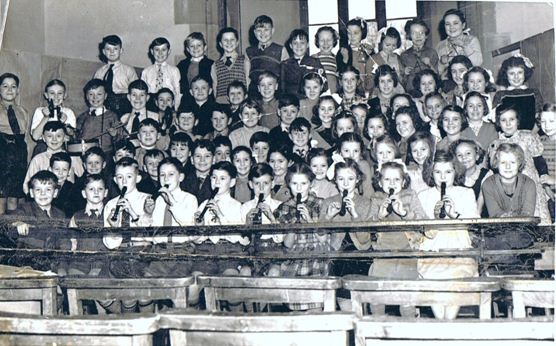
1953 -
1930’s
1905

This man would be looking roughly towards the Bridge House, Bersham, with Top School and the caretakers house in the background. To the right of the horses is the wood and beyond would be the 48 steps leading to Station Road. He's on the junction of Bersham Road and Plas Buckley Road. As you go down the hill into Bersham from Rhostyllen, he would be standing on the left as you go over the bridge,
The Children of Bersham School



1949

1951 Nativity play

1915 -

1934/35 -
1906 -




1949 Bersham Juniors (Form 3)
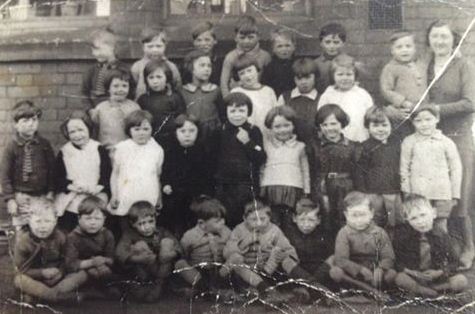

1931 -
1932 -
This photo of Bersham School taken around 1932 with William Herbert Jones third from the left second row. His brother (Iorwerth) is far left back row and sister Doris is third from right in the third row. His brother (Haydn) is second from right on the front row.

Christmas 1891 School Log Book
“It was a Christmas card I received. I presume it was written by the Headmaster and the figures are the temperatures in Fahrenheit” John Povah. Thanks John for all your help.

1931 Bersham School
1938 -



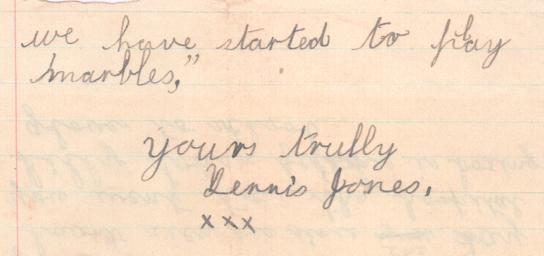





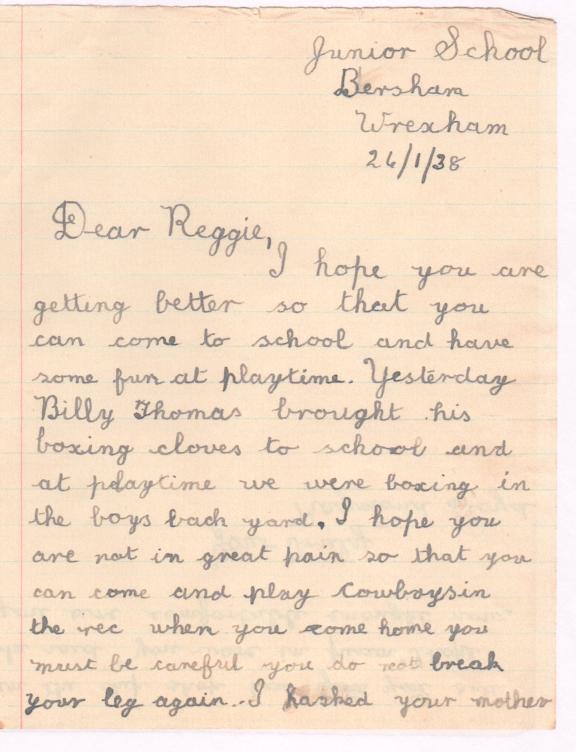

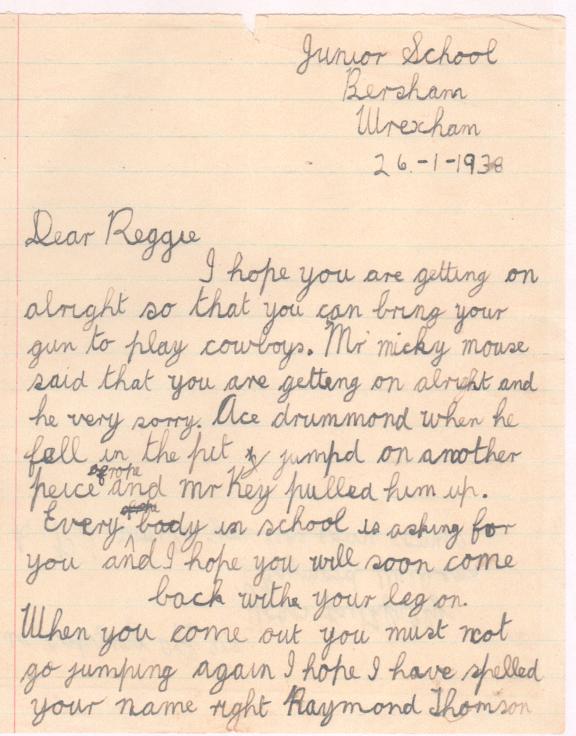
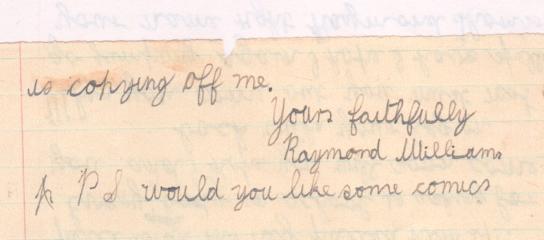






1902 Bersham Boys School Full Timers
1902 Certificate presented to Alb Williams for good attendance